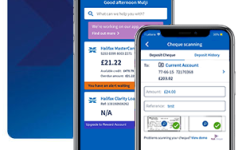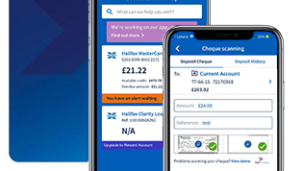ACH, which stands for Automated Clearing House transfer, is the fundamental way in which electronic money transfers between bank accounts are made.
It’s a financial mechanism that runs through the ACH network and provides a wide array of ACH transaction types to individuals and businesses alike. They have been very popular because they are efficient, reliable, and can be used to cater to many different financial needs. In this guide, we will find out how to send ACH payment, how to receive ACH payments, and much more.
How Does ACH Payments Work?
Before we learn how to send ACH payment, let’s learn a bit more about the transfer itself. An ACH money transfer is an electronic means of moving money from one bank account to another using the Automated Clearing House network. By the National Automated Clearing House Association (NACHa), this network serves as a conduit for handling electronic payments throughout the United States.
People use ACH transfers conveniently to manage direct deposits and bill payments automatically, while companies employ them for B2B payments, direct debits, and mail or telephone orders (MOTO).
How to do a ACH Transfer: The Mechanics of ACH Transfers
For any successful ACH transaction, important data has to be provided by individuals or businesses. This involves details like the payee’s name, routing/ABA number, and account number, as well as whether it is a business or personal bank account.
Besides that, there should be mention of how much money ought to be transferred in order not only to facilitate exact processing but also to bring about accuracy in its results. Once such information has been made accessible, then most probably within three to four working days, that particular process will end up being over.
The Role NACHa Plays In ACH Transactions
NACHa oversees the functioning of the ACH network as its governing body, whose major role is to ensure the efficiency, safety, and compliance of these transactions. Through the rules, standards, and guidelines established by NACHa, the integrity of the system remains desirable, and it serves both consumers’ and business interests at large.
Furthermore, NACHa ensures that regulatory requirements are met when it comes to making payments via ACH, thus building trust among people with regard to electronic payment systems and also making sure that the industry is in line with best practices.
Advantages of ACH Transfers
Before we learn how to send ACH payment online, it is worth taking a look at the benefits. The wide acceptance of these transfers has been due to a number of benefits they have for both the senders and receivers. These include:
- Cost-effectiveness: Companies and individuals involved in doing business prefer an ACH payment method because their transaction costs are usually lower than those incurred through traditional methods such as wire transfers.
- Efficiency: An ACH payment method is capable of processing payments quickly and efficiently; thus, this offers timely fund movement between different bank accounts without necessarily having to use physical checks or relying on paper-based systems.
- Convenience: Those who send ACH payments online enjoy the convenience since you can make your regular payments to be made automatically together with automating some transactions, making it easier for you to manage your financial obligations, including recurring expenses.
- Security: Throughout the ACH transaction process, there is encryption as well as other authentication mechanisms so that no one can easily access your sensitive financial information when using ACH transfers.
- Versatility: With a broad range of financial needs such as payroll processing, vendor payments, and customer billing in view, an ACH money transfer allows flexibility and possibilities in managing transactions.
Comparing ACH and Wire Transfers: Understanding the Differences
Two main methods stand out in electronic fund transfers, namely ACH transfers and wire transfers. These two serve to move money between accounts but are different in the speed, accessibility, and cost used. To help one make a good decision with regards to financial transactions, it is important to understand the differences between these two modes of transfer.
Speed and Accessibility
Wire transfers are known for their speed, which is sometimes completed in a day; hence, they become preferred, especially for urgent transactions. In addition, wire transfers can be sent internationally hence they offer global reach for transferring funds across international borders.
However, ACH transfers often take longer processing time that ranges from a few days to complete. Moreover, ACH transfers can only be done within US accounts, thus limiting their international usage.
Cost Considerations
The most significant difference between an ACH payment method and wire transfers is their costs. For instance, local wire transfers charge around $25-$30 while those involving foreign countries cost $45-50.
Apart from this fact, ACH transfer is much cheaper as compared to its counterpart since it charges less than some dollars per transaction among businesses while others go at no fee even though this practice seems uneconomical due to their nature of operation.
How to do a ACH Transfer: Types of ACH Payments
In brief, there are four main types of ACH entries or classes that serve distinct purposes:
- PDD (Prearranged Payment and Deposit Entry): This requires a payer’s written permission to electronically debit from his bank account.
- WEB (Internet-Initiated Entry): It involves debiting money electronically with permission obtained via the Internet, thereby making use of specific authorization language for clarity’s sake.
- TEL (Telephone-Initiated Entry): Phone-based consent is obtained for withdrawing money from a customer’s account after this recorded permission is verified.
- ARC (Accounts Receivable Entry) and BOC (Back Office Conversion Entry): In most cases, these entail using written checks as consents to perform ACH transactions and inform allowed individuals about check conversion possibilities going on. By following these entry classes, you can ensure compliance and clarity when initiating ACH payments for your business.
ACH External Fund Transfer Limitations
Although it is for the convenience of sending money through ACH between banks, it is important to be aware of limits that may be imposed by financial institutions. Here are some restrictions and policies that you should consider before initiating the transfer:
Limits on Amounts
Many financial institutions enforce daily and monthly maximum amounts for ACH transfers. Since these limits differ among banks, pay attention to this while planning your transactions.
Cutoff Point
Transfers done after, let’s say, 4 pm may only be processed the next working day. During weekends or holidays, delays could also happen in processing.
Non-Sufficient Funds Fee
If there are not enough funds in your account then you will be charged by your bank plus the transfer will stop. It is therefore important to have sufficient money in your account so as to avoid being penalized and ensure smooth completion of your transfers.
Limitations On International Transfers
Some US banks limit consumer ACH transfers to other countries. Verify with your bank if you can do international wire transfer or not.
Staff-Assisted Transactions Charges
Some sites use agents’ assistance recruitment fees, which are separate from those levied against online banking clients; some services charge customers, even though others do not if they want tellers or talk waiters instead. Check out what your particular bank’s policy is concerning staff-assisted transaction fees
This information will help you better navigate external ACH fund movements as well as minimize any hardships or costs involved. To ensure a seamless transaction that goes in line with your financial demands and requirements, prioritize speaking to your bank about any doubts you have concerning this matter.
How to Make an ACH Payment
An ACH transfer does not require much effort or paperwork when setting up; instead, it’s simple. Below are steps on how to make an ACH payment:
Step 1: Gather Necessary Information
When you want to initiate an ACH transfer, ensure you have the necessary information, including your name, routing/ABA number, account number, account type, and amount of transaction that usually occurs at the bottom part of the check.
Step 2: Choose Between ACH Debit and ACH Credit
Decide whether your transaction will be an ACH debit or credit where an ACH credit involves allowing your financial institution to send ACH payments directly to a payee like a utility company, while an ACH debit involves providing payment instructions to the payees who carry higher risk.
Step 3: Execute the ACH Transfer
Complete any necessary paperwork or e-paperwork that your financial institution requires to initiate the ACH transfer. This involves linking accounts; identifying the transaction type (credit or debit); entering the amount of payment and selecting payment date.
Accept ACH Payments From Customers
If you are a business owner, you need to know how to receive ACH payments. Indeed, you must consider accepting payments through ACH from customers as it makes transactions easier. Sign up with a payment processing company such as PaySimple or Stripe which provides tools needed for seamless transfers of electronic funds.
Wrapping Up
If you seek a faster and more seamless way to transfer electronic funds, the Automated Clearing House offers a viable solution. Now you know how to make an ACH payment. This is particularly advantageous if you’re working within a budget and aiming to minimize costs. Moreover, the recent introduction of same-day ACH transfers has effectively addressed the primary drawback of processing time.










